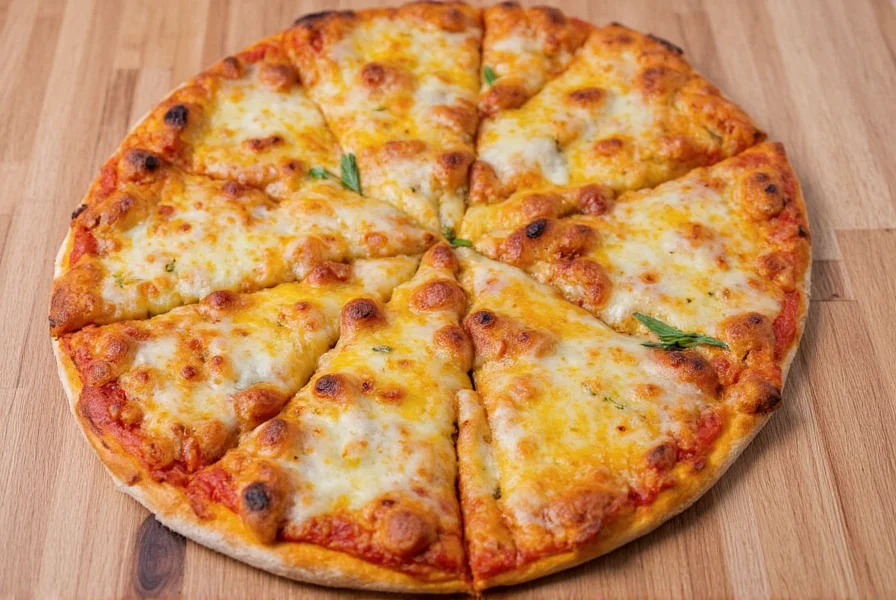Pizza herbs are essential aromatic plants that elevate the flavor of homemade pizza. In this guide, we'll explore the top 7 pizza herbs, how to use them effectively, where to buy the best quality, and storage tips to keep them fresh.

Table of Contents
- Top 7 Pizza Herbs
- Oregano: The MVP of Pizza Herbs
- How to Use Pizza Herbs Effectively
- Buying Guide: What to Look For
- FAQ Section
Top 7 Pizza Herbs
| Herb | Flavor Profile | Best Used With | Dried or Fresh? |
|---|---|---|---|
| Oregano | Earthy, peppery, slightly bitter | All pizzas, especially tomato-based | Both, but dried is most common |
| Basil | Sweet, aromatic, licorice-like | White pizzas, Margherita | Fresh only |
| Thyme | Woody, savory, mild | Mushroom or meat pizzas | Dried or fresh |
| Rosemary | Pine-like, strong, resinous | Garlic or oil-based pizzas | Fresh or crushed dried |
| Fennel Seeds | Slightly sweet, anise-like | Italian sausage or salami pizzas | Dried (whole or ground) |
| Mint | Cool, fresh, bright | Goat cheese or ricotta pizzas | Fresh only |
| Marjoram | Sweet, citrusy, milder than oregano | Seafood or vegetable pizzas | Both, fresh preferred |

Oregano: The MVP of Pizza Herbs
While all these herbs bring something special to the table, none command the same respect as oregano. It’s no wonder why it’s considered the quintessential pizza herb.
Why Oregano Wins Every Time
- Heat Tolerance: Unlike basil, which wilts under high heat, oregano actually shines when baked into the crust.
- Flavor Intensity: It has a bold, robust flavor that stands up to rich cheeses and tangy tomatoes.
- Versatility: Works equally well in red sauces, white pizzas, or even drizzled with olive oil before baking.

A Quick History Lesson
Oregano has been a staple in Mediterranean cooking for centuries. The word "oregano" comes from the Greek words oros (mountain) and ganos (joy), meaning "joy of the mountains." In Italy, it became synonymous with rustic cooking—and naturally found its way onto pizza after tomatoes arrived from the New World.
How to Use Pizza Herbs Effectively
Using herbs might seem straightforward, but there's definitely an art to it—especially when making pizza. Here are some pro-level tips to get the most flavor possible.
Tip #1: Timing Is Everything
- Add dried herbs early: Dried herbs like oregano and thyme benefit from being added before baking, allowing their flavors to infuse during cooking.
- Add fresh herbs late: Basil, mint, and fresh rosemary should be added right after baking to preserve their volatile oils and fragrance.
Tip #2: Don't Overdo It
You might be tempted to go heavy on the herbs, but too much can overpower the base ingredients. Stick to about 1 teaspoon of dried herbs per 12-inch pizza, adjusting based on personal taste.
Tip #3: Toast Before Using
Lightly toasting whole leaf dried oregano or fennel seeds in a dry pan before sprinkling on your pizza can unlock deeper, nuttier notes.
Tip #4: Mix and Match
Create signature blends by combining two or three herbs. For example, try oregano + basil for classic Neapolitan style, or marjoram + thyme for a wood-fired mushroom pizza.

Buying Guide: What to Look For
Choosing the right pizza herbs isn't always easy. Here's what to look for when shopping for both fresh and dried varieties.
For Dried Herbs
- Color: Vibrant color indicates freshness. Avoid faded or grayish herbs.
- Smell: Crush a bit between your fingers. If it smells weak or dusty, skip it.
- Source: Look for organically grown options without additives or preservatives.
- Packaging: Opt for airtight containers or resealable bags to keep potency longer.
For Fresh Herbs
- Appearance: Leaves should be vibrant, firm, and free of yellowing or black spots.
- Stem Texture: Stems should be crisp—not slimy or overly woody.
- Smell: Fresh, fragrant scent is key. Avoid any that smell moldy or off.
Recommended Brands & Products
| Product | Features | Best For | Occasions |
|---|---|---|---|
| McCormick Culinary Oregano Leaves | Pure, potent, foodservice-grade quality | Commercial kitchens or serious home bakers | Everyday pizza making, restaurants |
| Frontier Co-op Organic Oregano | Organic certified, non-GMO, eco-friendly packaging | Health-conscious consumers | Weekend family dinners, organic recipes |
| Bella Sun Luigia Marinated Oregano | Oil-marinated, ready-to-use, intense flavor | Those who want convenience with extra kick | Party platters, quick prep |
| Herbes de Provence Blend | Includes thyme, rosemary, marjoram, savory | For complex herb profiles | Wood-fired pizzas, gourmet events |
| Fresh Basil from Local Farmers Market | Fragrant, pesticide-free, locally sourced | Those who love a burst of freshness | Finishing touch on Margherita pizzas |

Frequently Asked Questions About Pizza Herbs
Can I use Italian seasoning instead of pizza herbs?
Yes! Italian seasoning usually contains a mix of oregano, basil, thyme, and marjoram—perfect for pizza. Just check the label to make sure it fits your flavor profile.
What is the most traditional herb used on pizza?
Oregano is considered the most traditional herb for pizza, especially in American-style pizza. It has been used since tomatoes were added to pizza in Naples, Italy. Its earthy, robust flavor pairs perfectly with tomato sauce and melted cheese.
Is fresh oregano better than dried?
Not necessarily. Fresh oregano has a lighter, grassier flavor, while dried is more concentrated and ideal for baking. Both have their place depending on the recipe and timing.
Can I use dried herbs instead of fresh on pizza?
Yes, dried herbs work very well on pizza, especially oregano. In fact, dried herbs often perform better in pizza cooking because they can withstand high oven temperatures without wilting. Just remember that dried herbs are more concentrated, so use about 1/3 the amount of dried herbs compared to fresh.
How do I store my pizza herbs?
- Dried herbs: Keep in a cool, dark cupboard in airtight containers for up to a year.
- Fresh herbs: Wrap in damp paper towel and store in fridge, or freeze chopped in ice cube trays with olive oil.
How much herb should I put on my pizza?
For a standard 12-inch pizza, use about 1 teaspoon of dried herbs (like oregano) or 1 tablespoon of fresh herbs (like basil). It's better to start with less and adjust to your taste preferences. Remember that pizza herbs should enhance, not overpower, the other ingredients.
Can I grow my own pizza herbs?
Absolutely! Most pizza herbs are easy to grow indoors or outdoors. Try planting a small kitchen garden with oregano, basil, and thyme for fresh-picked flavor all season long.

Conclusion
Whether you're pulling a piping-hot pizza out of a professional stone oven or popping one in the toaster oven, don't underestimate the power of a good herb. Oregano may be the star, but each herb brings something unique to the table.
By understanding the role each pizza herb plays and how to use them effectively, you can create pizzas that impress your friends, satisfy your cravings, and maybe even win you some local fame in your neighborhood potluck league.
So next time you roll out your dough, take a moment to think about your herbs. After all, a little sprinkle of oregano might just be the secret ingredient you didn't know you were missing.

Stay spicy, pizza lovers!











 浙公网安备
33010002000092号
浙公网安备
33010002000092号 浙B2-20120091-4
浙B2-20120091-4